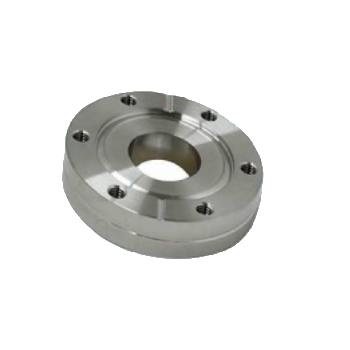Vacuum technology plays a crucial role in many high-performance industries, from semiconductor manufacturing to particle physics research. The reliability and efficiency of vacuum systems depend largely on the type of components used, especially vacuum flanges. These flanges form critical seals within the system, maintaining the integrity of the vacuum environment. Among the most widely used options are Conflat Vacuum Flange and KF Vacuum Flange types, each offering unique benefits based on the application.

Understanding the Role of Conflat Vacuum Flange
In high and ultra-high vacuum applications, Conflat Vacuum Flange is a trusted standard. This flange design uses a knife-edge sealing mechanism that compresses a soft copper gasket, ensuring a robust and permanent seal. These flanges are usually made of stainless steel, offering resistance to both corrosion and high temperatures. They are commonly found in systems that require minimal leak rates and long-term vacuum stability.
The Conflat design is highly suited for environments such as particle accelerators and electron microscopy chambers. It supports bake-out procedures up to high temperatures, which are essential to achieve ultra-high vacuum conditions. The reliability and leak-tight seal of the Conflat flange make it ideal for scientific and research-based vacuum systems.
Efficiency and Simplicity of KF Vacuum Flange
On the other hand, KF Vacuum Flange (also known as Klein Flange or NW Flange) offers a quick and simple way to assemble and disassemble vacuum lines. This flange system uses a centering ring and an O-ring, clamped together with an aluminum or stainless steel clamp. The KF system is designed for ease of use and is ideal for low to medium vacuum ranges.
Industries such as pharmaceuticals, laboratories, and general-purpose vacuum systems often use KF flanges for their fast-connect capability. While they don't offer the ultra-high vacuum performance of Conflat flanges, KF systems are extremely valuable in setups that require flexibility, rapid reconfiguration, or temporary connections. Their user-friendly design reduces downtime and increases productivity.
Choosing Between Conflat and KF Flanges
The decision between Conflat Vacuum Flange and KF Vacuum Flange should be based on your system’s vacuum range, leak tolerance, and operational needs. Conflat flanges are better suited for permanent or semi-permanent installations that require ultra-high vacuum levels and structural integrity. They take longer to assemble but provide superior sealing and long-term stability.
In contrast, KF flanges are optimal for setups requiring frequent maintenance or modularity. They are faster to work with and cost-effective, making them a preferred choice for experimental and lab-scale systems that don't demand ultra-high vacuum conditions.
Material and Compatibility Considerations
Both Conflat and KF flanges come in various sizes and materials to fit different system requirements. Stainless steel is the most common, offering durability and chemical resistance. Additionally, proper maintenance of the gaskets and O-rings is crucial in both flange systems to ensure vacuum integrity and performance.
Using compatible fittings and adhering to recommended torque values during installation will extend the lifespan of both Conflat and KF flange systems. Whether for a complex research facility or a university lab, understanding these technical requirements ensures optimal vacuum performance.
In conclusion, whether your system demands the precision of a Conflat Vacuum Flange or the flexibility of a KF Vacuum Flange, selecting the correct component is essential to vacuum system success.
For more info:-1. Facebook
2. Instagram
3. Youtube
Comments on “Choosing the Right Vacuum Flange for Precision Systems”